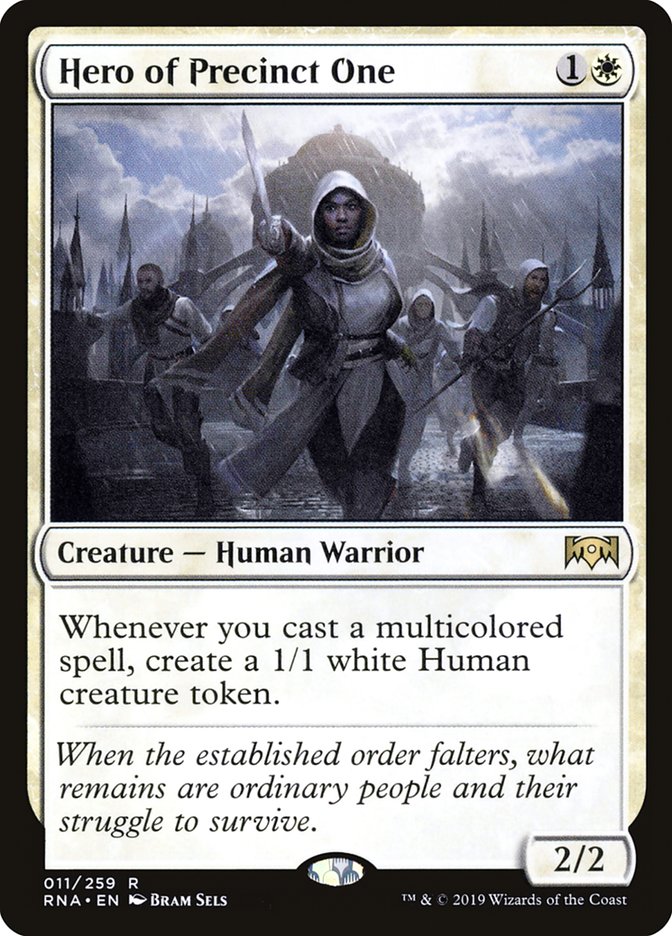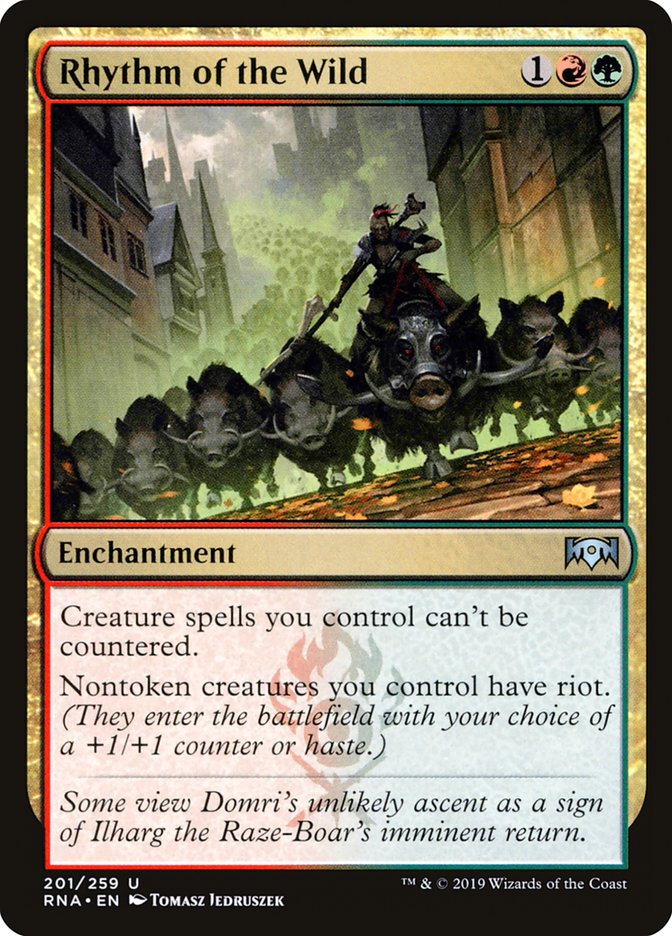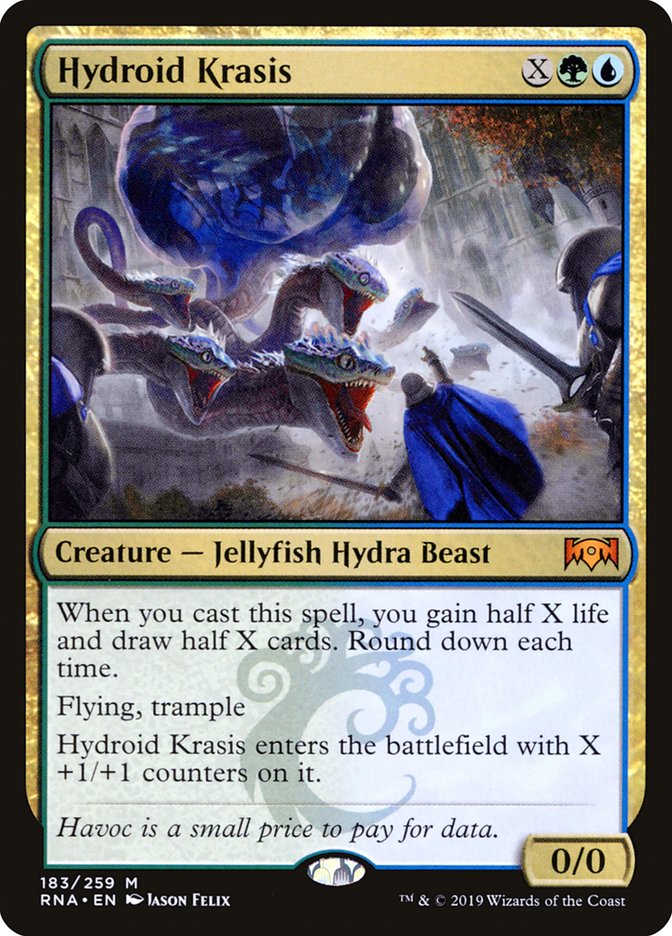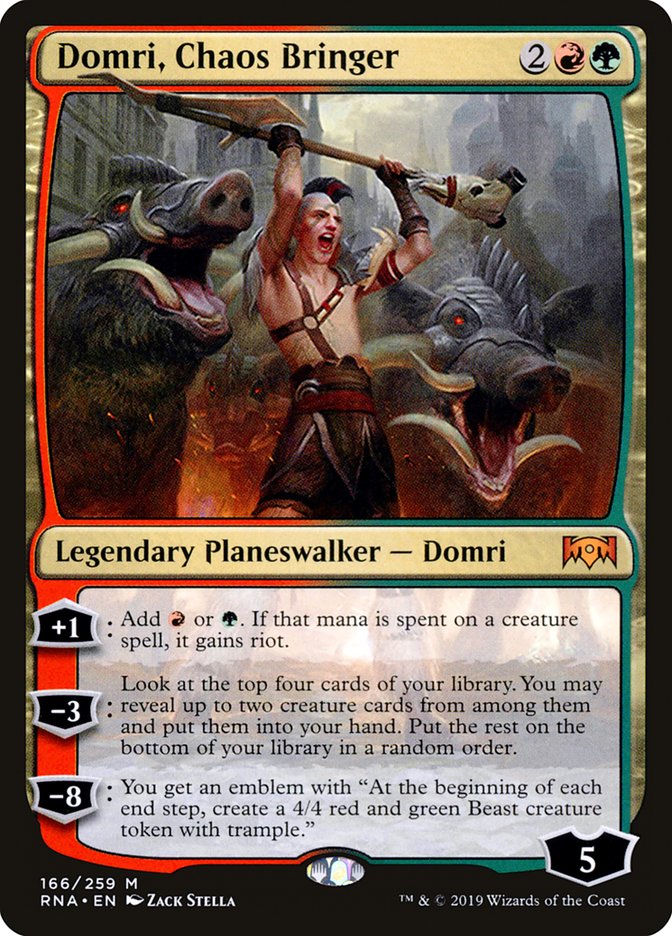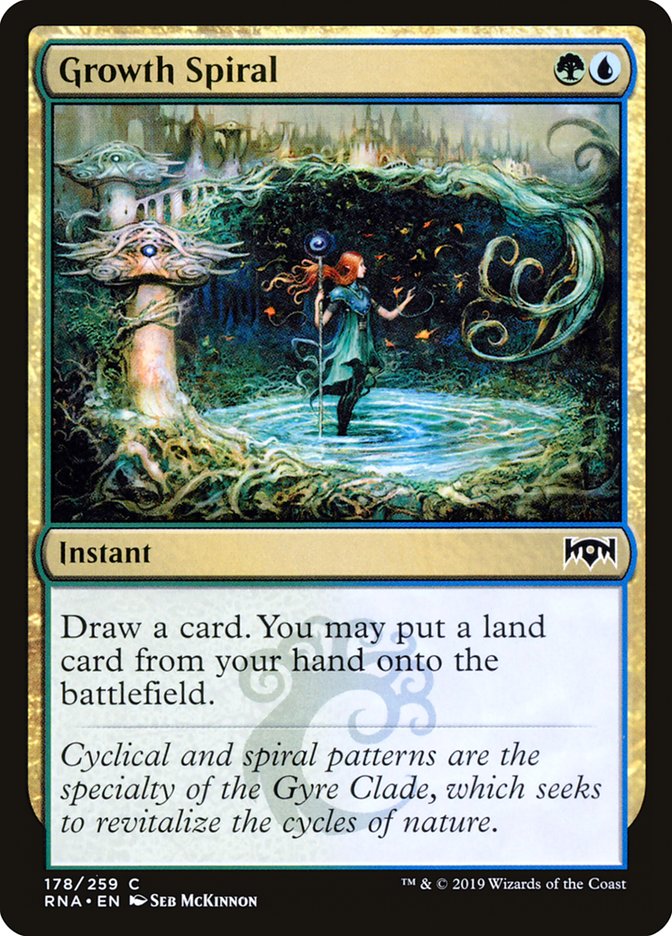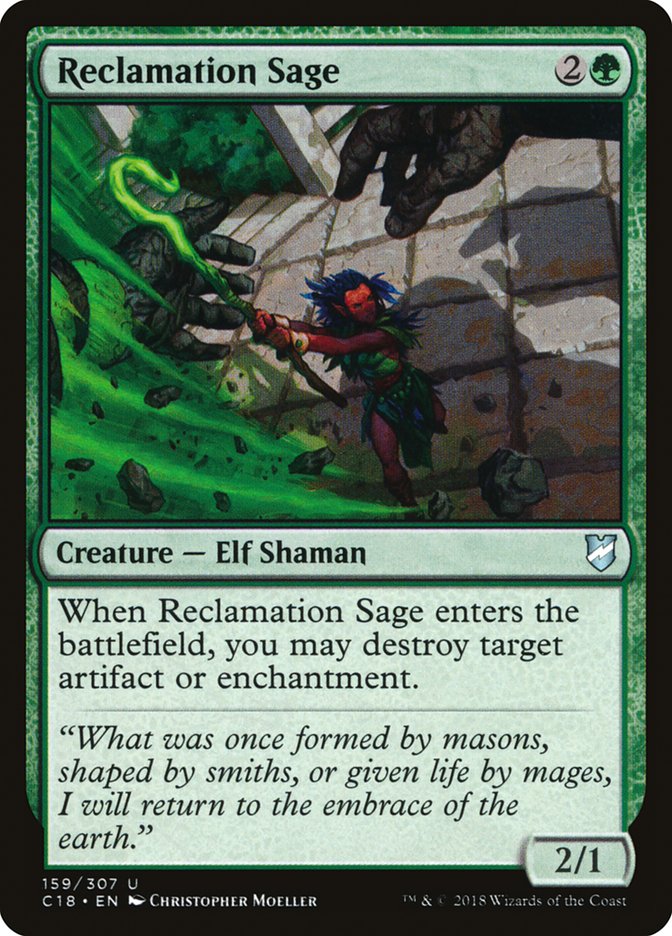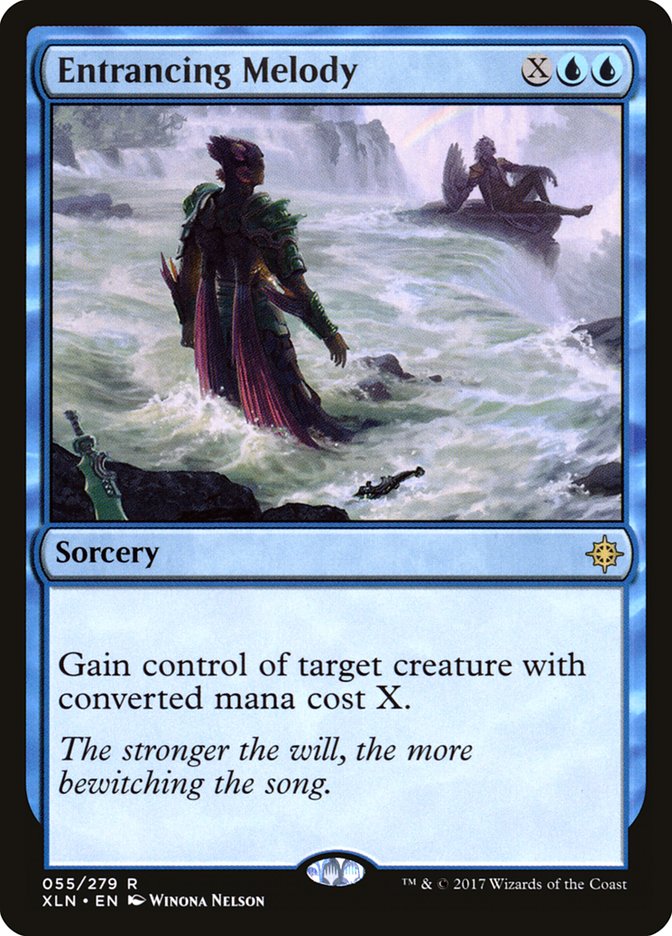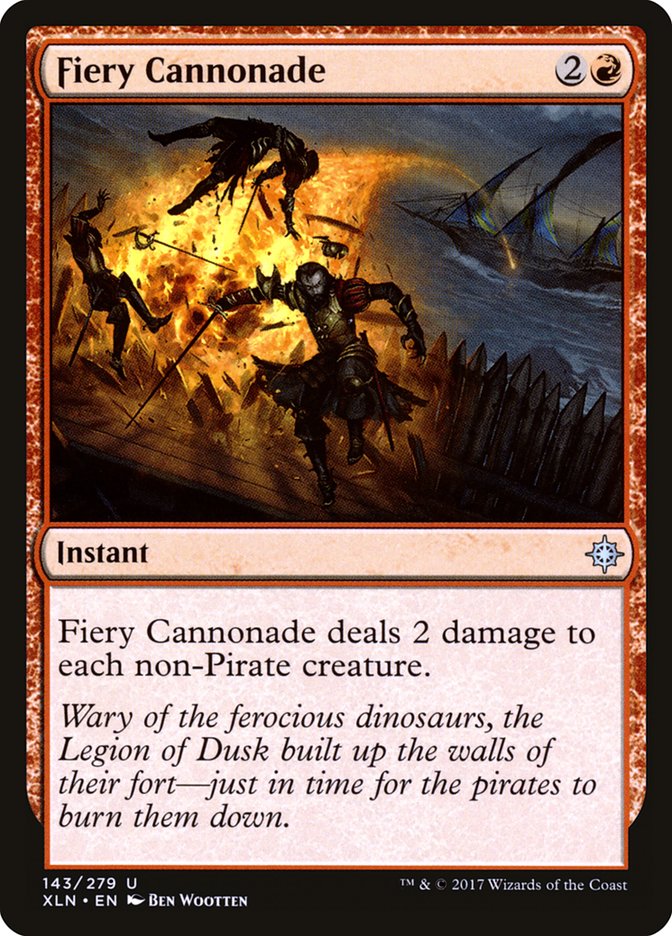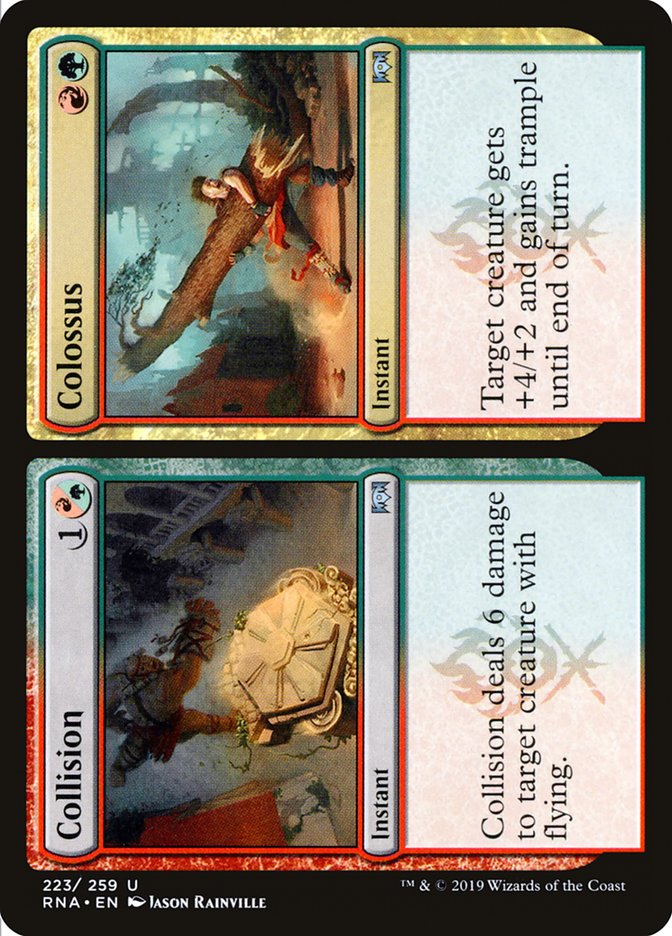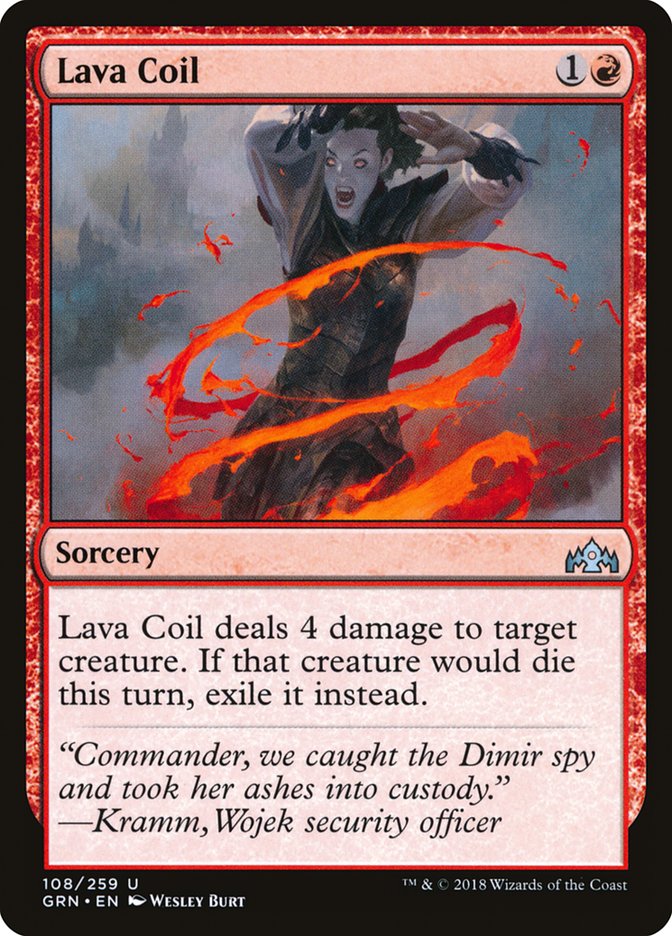On Wednesday, Wizards of the Coast granted streamers the opportunity to play Ravnica Allegiance on Magic Arena a day before the set officially released on its digital platforms. Each account was stocked with every Ravnica Allegiance Standard card, meaning we could get right into exploring the new landscape of the format. I streamed for close to ten hours and every single game I played was of this new Standard format. So today, I’m going to go over everything I learned from my experiences, but not before I get in a quick shameless plug!
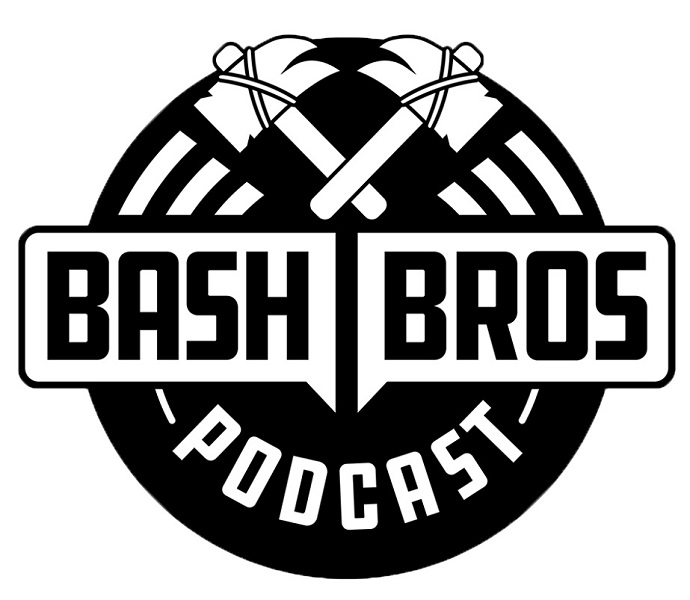
My brother from another mother, Corey Baumeister, and I are starting a weekly podcast! We’ve been wanting to do this for some time now and are so excited to get this project off the ground. Now, there’s nothing special about what we’re going to talk about – we’ll discuss strategy, theory, tournament results, social topics, and all those normal topics you’ve become accustomed to. That’s not what makes us special. The real secret ingredient of our podcast is that each week we’ll be having a special guest on the episode.
That’s right! Someone will always be joining us! Our first special guest, you ask? Well that’s none other than our best friend, Mr. Brian Braun-Duin!

Our first episode comes out today, so head over to @BashBrosPodcast for more information on where to take a listen!
All right, we can get back to what we’re all here for!
Ravnica Allegiance Standard
The day started with me having lots of expectations of how cards would perform, yet many of those preconceived notions didn’t hold up once I started playing the games. It’s still baffling to me just how complex Magic truly is and that, after all these years of evaluating cards, I still rarely get it right. I can theorize on a card for hours, but seeing it in action once unravels my previous expectations. There’s just something beautiful about this game that I may never be able to truly articulate.
One of the first decks I played was Yoman5’s “Mardumans” deck that looked like a good first take on an Aristocrats shell.
Creatures (29)
- 4 Benalish Marshal
- 4 Hunted Witness
- 2 Tajic, Legion's Edge
- 4 Imperious Oligarch
- 3 Judith, the Scourge Diva
- 4 Fireblade Artist
- 4 Hero of Precinct One
- 4 Footlight Fiend
Lands (23)
Spells (8)

Best-of-one Standard and Sealed were the only available formats for this early access event. With only around 400 players active throughout the day, WotC didn’t want things too spread out so players didn’t have to wait in the queue for long. This didn’t have anything to do with them pushing a best-of-one narrative, as they’ve already announced the next ranking season will support best-of-three Standard. It’s just worth noting because many of today’s decks won’t have sideboards, since I didn’t get in any practice with them.
Yoman5’s Mardu Aggro list was decent. There were a few issues I had with it – Final Payment was rather underwhelming – but for the most part the deck was functional. Whenever I could cast my spells, I usually was winning the game. This might mean the mana needs some more work, but for now we can just look at what worked instead of trying to make this exact list functional.
Hero of Precinct One worked, and it worked well. The card’s just really good and there’s not that much more to it. Generating extra creatures helps most game states, but the interaction these tokens had with Judith, the Scourge Diva and Heroic Reinforcements really pushed it over the edge for me.
Its degeneracy doesn’t stop there though, as cards like Trostani Discordant could also tango well with this two-drop, especially since there are so many multicolored cards in Selesnya. With so many cheap multicolored cards in this format, I’d be shocked if Hero doesn’t find a centerpiece role in one of Standard’s most dominant strategies, especially when white was so desperate for good two-drops and loves ways to make convoke cards less clunky.
After I got my Mardu fix in, I switched gears to work on a variety of Grixis Control strategies. The addition of Blood Crypt helped smooth things out a bit, but the real hero was going to be Bedevil. Shockingly enough, a better manabase wasn’t enough to keep these strategies competitive. The format seemed to be speeding up and one card in particular was more of a headache than I could have imagined.
Unlike Hero of Precinct One, Rhythm of the Wild was always on my radar. I knew people were excited about this card, but for the life of me I just couldn’t see the appeal. I could wrap my head around the idea of Rhythm being good against control, but never in my wildest dreams did I expect it to do what I witnessed.
The moment that Rhythm of the Wild hit the battlefield against me for the very first time, I knew I was going to lose the game. There was just no way for me to keep up with every creature having the ability to attack the turn it entered the battlefield. Haste is without a doubt one of the most powerful of abilities in Magic, but I just assumed taking the turn off to cast this card wasn’t going to be worth it.
Well, I was wrong. Rhythm of the Wild is the real deal and will see a decent amount of play, if not in maindecks, then in sideboards. Cards like Mortify must work overtime in this upcoming Standard format to make sure Gruul doesn’t take over the game with this powerful enchantment.
For a decent portion of the night, Brian Braun-Duin and I direct challenged each other. We were both playing decks submitted by our viewers, so the matches were entertaining, as we both had a plethora of brews at our disposal. While most of our games were just us having fun, there was one card in particular that I remembered being very impressed by.
Brian played with many different versions of a strategy I can best describe as “Temur Creatures,” just a smattering of mana creatures; Domri, Chaos Bringer; and a healthy curve of threats. His curves always ended with Hydroid Krasis and often it overwhelmed my defenses. He’d cast it for a large amount of mana, draw cards, gain life, and now have a giant flying blocker. If I spent time killing it, he always seemed to have drawn into another one to start the process all over again. If I couldn’t win the game on that turn, it was all over, as he now had a hand full of gas.
I’m not going to say that Hydroid Krasis is this game changing Mythic that I slept on because I still have my reservations about this card, as we rarely see this design impact Standard heavily. My gut tells me that the format will speed up, use the right removal, and thus leave day one cards like this in the dust. That said, I’m willing to be wrong on Hydroid Krasis as it did seem very impressive in our testing.
I’m mostly interested in trying Hydroid Krasis in a Sultai Midrange shell. Tapout effects like this don’t feel all that good to me in decks that don’t maximize on creature removal, which Temur doesn’t. Things just want to be stable on these “reload turns,” plus you want to draw into a mix of threats and interaction. Sultai also feels like the type of strategy that Hydroid Krasis could thrive in once all these Carnage Tyrant answers start seeing play, lowering the effectiveness of the standalone threat.
All of this will depend on how good Domri and the rest of his Gruul Clans actually are. Temur could end up being a phenomenal strategy all on its own, but my fear is the deck will lose too many games once put on the back foot. Gruul decks just might not need to branch out for another color if the initial gameplan is killing opponents dead.
Brian wasn’t the only one playing with impressive cards, though. Sure, he was the one drawing boatloads of cards and beating me down with his 1/3 fan club army, but I knew I’d eventually have the last laugh. One that hasn’t happened just yet, but I know it’s coming one day!
Luckily for me, one of my subscribers sent me an interesting spin on Izzet Drakes. I haven’t been the biggest fan of Izzet Drakes in the past, but that’s mostly just due to how good Golgari Midrange was. Now that I don’t think that’ll be the case, I could see the strategy becoming much better. The list I was sent wasn’t doing too many things differently from those we’ve all become familiar with over the past months, but it was splashing for one card in particular.
Growth Spiral was the card I was most excited about when we first saw cards out of Ravnica Allegiance. An effect like this at instant speed is just amazing because it opens the door for interactive decks to play mana acceleration! There are potential downsides for Growth Spiral existing at the same time as Turbo Fog, but the card may also allow a very cool strategy to emerge.
Creatures (10)
Lands (21)
Spells (29)

I cast Crackling Drake on Turn 3 in the very first game I played with this deck. Right then, I knew there was something to this interaction. Admittedly, it didn’t seem appropriate for an Izzet deck to have such a lackluster splash, but I wasn’t really getting punished for doing so either. Instead, being able to accelerate just allowed me to churn through my deck at an even faster rate, have extra mana to protect threats with Dive Down, and even cast Niv-Mizzet, Parun earlier than normal.
I was having a lot of fun with the deck. Right then and there I knew that Temur Drakes would be my starting point for exploring this new Standard landscape, so I worked on an initial list and am excited to get to work on the deck.
Creatures (12)
Lands (21)
Spells (27)

Growth Spiral and Sailor of Means work well together, giving the deck a consistent pathway to extra mana. This is important in a world where you need to get Drakes online as quickly as possible. After sideboarding, that consistency grows, as we can then incorporate Sarkhan, Fireblood into the strategy. Alongside Growth Spiral on Turn 2, Sarkhan allows for a Turn 4 Niv-Mizzet with Dive Down protection. That’s game!
The splash for green, oddly enough, is great for the deck’s sideboard. I say this because green cards typically aren’t what a deck’s looking for in a sideboard. Yet this deck has needed the ability to interact with artifacts and enchantments for some time. Now we finally have a great way to interact with opposing copies of History of Benalia and enchantment-based removal like Ixalan’s Binding. Look out, Azorius, because the Drakes are about to break free!
I’m still unsure if Rhythm of the Wild is worth sideboard slots here, but that will only be answerable once we know just how powerful control decks like Esper end up. If they’re good, we would love a way to just dominate games with uncounterable, hasty beatsticks.
It’s really tough to tell exactly what removal spells the sideboards will want right out of the gates. It really all depends on how effective these Judith, the Scourge Diva decks are at beating Wildgrowth Walker strategies. Who knows – maybe Incubation Druid and Growth-Chamber Guardian fill these green roles better? Until we know more, I’ll just bounce back and forth trying to find proper configurations while closely watching the metagame. There’s really not much more we can do in this department until we get more games in this evolving format.
Don’t worry, though. My plan for the next week is to work on this deck a lot. If there’s a mixture I’m happy with leading up to #SCGINDY, I’ll be sure to write about it next week. For now, though, I want to know what cards you’ve found the most impressive. Talk to me!


